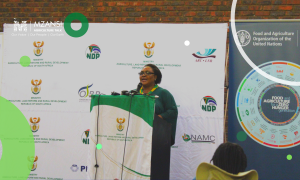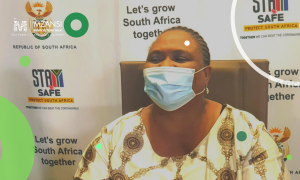For about six years, China is taking a centre stage in geopolitical tension with other developed economies, most significantly the United States of America (US) and Australia. These economic wars culminated into drastic increases in tariffs on a number of commodities and wine was not exceptional. Irrespective of the affected commodity, economies embattled in the wars have always claimed that the intension of raising tariffs is to protect domestic suppliers of a given product.
However, for developing economies like South Africa, which look up to developed economies as better markets for agricultural products, tariff adjustments enacted in developed economies inevitably affect how developing economies get involved in international trade. Effects of geopolitical tensions were further worsened by the outbreak of COVID-19 pandemic which significantly disrupted global value chains. This article provides insights into the genesis of geopolitical tensions and how they have influenced South Africa’s wine exports.
Genesis of geopolitical tensions
Upon declaring COVID-19 outbreak a pandemic, tension arose between Australia and China following a request by the Australian Prime Minister for an independent inquiry into the origin of the coronavirus. In retaliation, China threatened to block the tourism and wine sectors, which are the backbone of Australia’s economy.
Furthermore, China claimed that Australia was dumping wine on the Chinese market, and this escalated into a trade war in which each country started to impose very high tariffs on each other’s key exports. An interim anti-dumping tariff increase on Australian wines by 105% (to 212.1%) was declared on November 28, 2020 and later formalised to 218.2%. Following a series of complaints by Australia, the World Trade Organisation (WTO) picked interest in investigating China’s anti-dumping tariffs imposed on Australian Wines.
For the US, feud with China arose when the administration of President Trump came into power. Unlike the predecessors, it is reported that President Trump’s administration mercantilely applied national economic policies as exhibited in the slogan “America First”. However, under the leadership of President Xi Jinping, China showed interest in proposing itself as a global warrantor, an identity that has for many decades been attributed to the US.
Since then, the tension has been characterised by economic related actions, through which the US has imposed higher tariffs on Chinese products while China responds by introducing new tariffs on US products, especially from the agriculture sector. Wine was not exceptional! Prior to the US-China conflict, China imposed a 48% duty on wines from the US but following this instance, tariffs rose to 93% by June 2019. However, following the intervention of the WTO, the two economic giants reached an agreement through the “Phase One trade deal” which came into effect on February 2020.
Wine trade perspective
Before the trade war, Australia was the biggest supplier of wine to China while the US and South Africa ranked seventh (7th) and eleventh (11th), respectively. However, since the geopolitical tension started, Australia’s market share has slumped to only about 6% from 40% while the growth in US’s wine destined for China also dropped by 15% between the second and third quarters of 2020.
As of Mid-November 2021, Australia was the 12th leading supplier, six and seven positions below the US and South Africa. Notably, the US’ wine exports to China had also dropped not until the “Phase One trade deal” was enacted. Since, then US’ wine exports to China have drastically increased by 120%, based on the latest TradeMap data.
According to latest data from South Africa Revenue Services, for the year 2021 (January – September), South Africa’s global wine exports (by volume) increased by 21% when compared to the same period during 2020. By value, global exports were worth R7.796 billion, equivalent to 11% rise when compared to the 2020 period. Whereas China has been at the centre of the geopolitical tensions, the volume and value of South Africa’s wine destined for China between 2020 and 2021 during the specified months rose by 247% and 74%, respectively.
The share of South Africa’s wine exported to China also increased by 2% (by volume) from 1% in 2020 while the share by value rose from 3% to 4%. According to TradeMap data, following the imposition of retaliatory tariffs to Australia’s wines, South Africa’s wine exports to China have increased by 154% (by value) between the first quarter of 2020 and the second quarter of 2021. Thus, suggesting that South Africa’s wine industry is increasing its footprint in China despite the ongoing disruptions (COVID-19 & geopolitical tension).
Although it may require more empirical work to validate the argument, latest data seems to suggest that China’s retaliatory tariffs on wines from Australia and the US have been beneficial to South Africa’s wine industry. The geopolitical tensions created a gap in the Chinese wine market, hence the need to compensate for the surplus demand in that market.
For instance, since the official retaliatory tariff of up to 218% imposed by China on Australian wines disguised as an anti-dumping duty, Australia’s wine exports to China have significantly dropped by 77% within one year, yet China’s overall consumer spending increased coupled with a quick economic recovery from the outbreak of Covid-19 pandemic.
Conclusion
Despite the disruptions due to the pandemic, the ongoing geopolitical tensions between China, Australia and the US, manifested in the form of retaliatory tariffs have provided a conducive environment for South Africa’s wine industry to increase its footprint in the Chinese market. Therefore, it is recommended that with further assistance from the government, the wine industry should consider strengthening their position in China, either through generic export promotions or other interventions before the geopolitical tensions with the top wine suppliers are resolved.




















